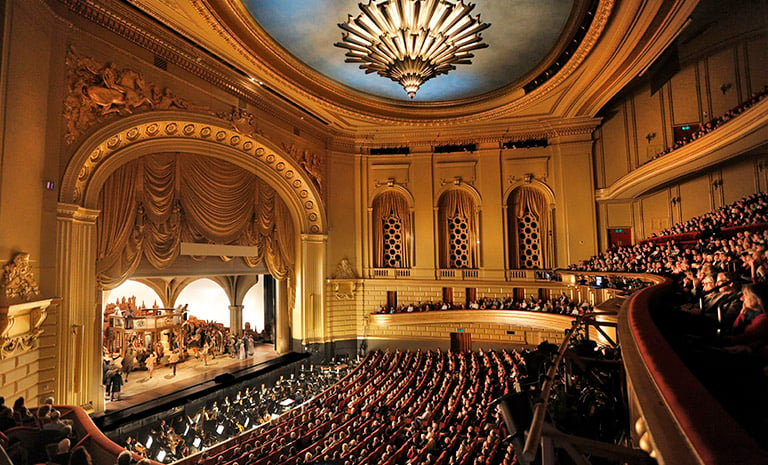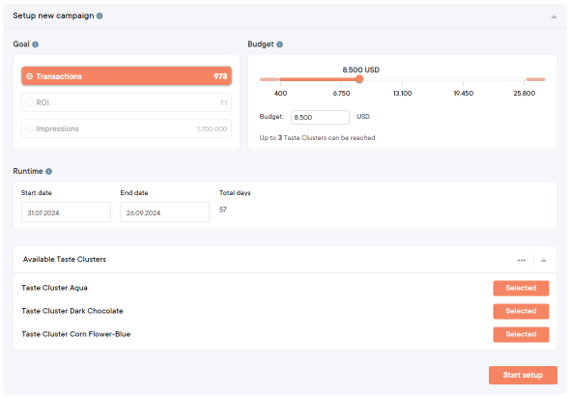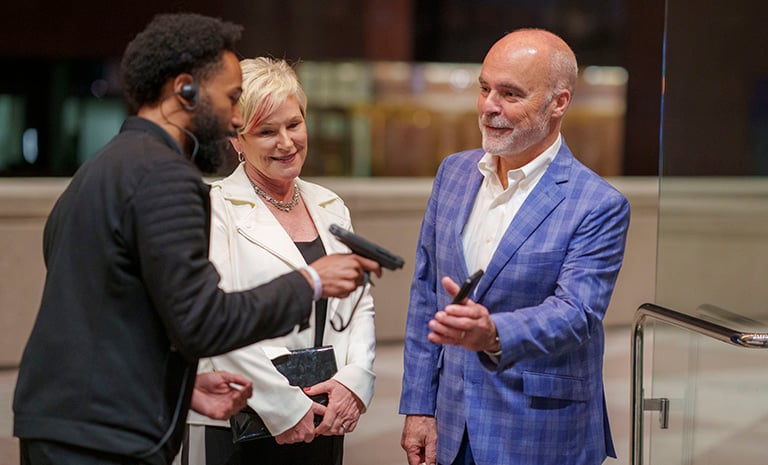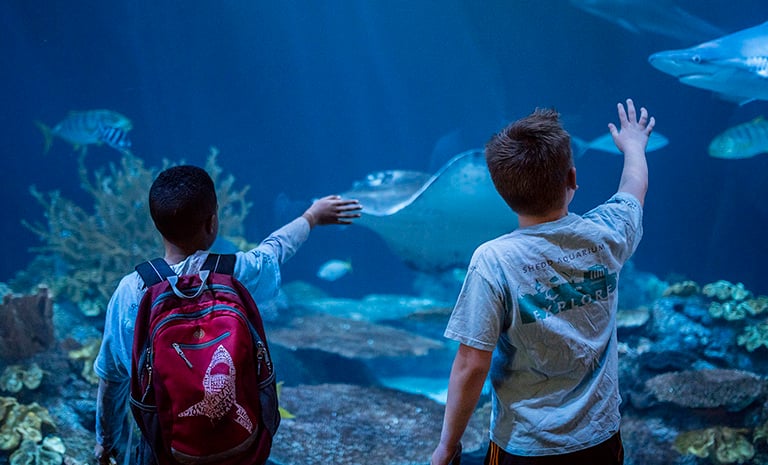Technology
Audience Development
Digital
Arts and Culture
Article
Success Stories
402c274b-2c3a-404c-9109-69b135569ed8
7 min
https://edge.sitecorecloud.io/tessituraneab9a-tessiturane5642-staging-5396/media/Images/Success-Stories/SF-Opera-768x465px.jpg?h=465&iar=0&w=768
San Francisco Opera and California Academy of Sciences offer two success stories
Can AI help find new customers and donors?
4/7/2025
7 min
Can artificial intelligence help arts and culture organizations find new customers and donors?
Tessitura CEO Andrew Recinos reports that’s the number one question he hears when he talks to arts and culture leaders about our goal to augment their work by bringing AI to our products. Understandably, the perennial challenge of growing audiences and revenue is top of mind.
AI’s capabilities are rapidly expanding. Adoption is also growing wildly: People are experimenting with AI far faster than they adopted personal computers or the internet. They’re looking to AI to help solve a multitude of problems, both personal and professional.
Scholar Ethan Mollick wrote, “Where previous technological revolutions often targeted more mechanical and repetitive work, AI works, in many ways, as a co-intelligence. It augments […] human thinking to dramatic results.”
The perennial challenge of growing audiences and revenue is top of mind.
That co-intelligence is already proving to be a useful partner for arts and culture professionals in the hunt for new ticket buyers and donors. How can AI help analyze our data, synthesize insights and suggest new pathways? Members of the Tessitura community, both from technology hub San Francisco, offer two examples. San Francisco Opera found success using an AI-powered tool to expand audiences for a hard-to-sell production. The California Academy of Sciences started using AI to identify prospective donors.
Finding new opera audiences
“You’d think that if an opera about Steve Jobs would sell tickets anywhere in the world, it would be in the city where he was born, about 40 minutes from the Apple headquarters,” said Tyler Cervini, Marketing Manager for Digital and Acquisition at SF Opera. At least that was the company’s thinking when they scheduled a production of The (r)Evolution of Steve Jobs in the 2023–2024 season. However, they struggled to sell tickets, even to their loyal subscribers.
The marketing team surveyed the layers of their plan, from subscription campaigns and advance rush tickets to paid media. Then, a path opened at the junction of AI and the ever-changing social media landscape. SF Opera was invited to work with a company seeking to improve the process and outcomes of paid social promotion.

San Francisco Opera performance at the War Memorial Opera House · Photo by Cory Weaver
The Berlin-based company is Future Demand. Their online platform uses AI to automate building and optimizing Meta campaigns. Meta, the parent company of Facebook and Instagram, offers advertisers access to millions of potential customers. Their troves of data help target ads based on people’s interests and affiliations.
For The (r)Evolution of Steve Jobs, the SF Opera marketing team decided to split their paid social budget between two tactics. They continued a manually created Meta campaign while experimenting with Future Demand’s AI-powered approach.
Future Demand uses AI to create what it calls taste clusters: segments of people with similar interests. It looks at customers’ online behavior and integrates with SF Opera’s Tessitura CRM platform to incorporate data such as past ticket purchases. Then, it creates Meta campaigns that serve targeted ads designed for each segment’s interests.
The platform provides topic recommendations for each taste cluster. Tyler explained, “You can write numerous captions, numerous headlines and add multiple creative options. Future Demand will create as many combinations of all three aspects as possible [and] run them all as ads.” The platform uses machine learning to optimize the campaigns. It identifies and pauses the lowest-performing ads, shifting more budget to high-performing ones.
SF Opera found the new AI-powered platform highly effective. It helped them create more ad variations with targeted messages, leading to lower costs per ad. Compared to the traditional campaign, the new approach had a 67% lower cost per purchase and a 21% lower cost per page view. Overall, they realized a higher return on investment with the new AI platform.
SF Opera’s new AI-powered approach had a 67% lower cost per purchase and a 21% lower cost per page view than the traditional campaign.
These methods apply to other channels, too, including email. Each taste cluster can be grouped into a list that pulls directly into the opera’s email marketing platform, Prospect2. With Prospect2’s dynamic content capabilities, the team can tailor messaging to multiple segments with less work.

Sample campaign setup screen through Future Demand
“We’re able to really increase the efficiency of our marketing,” Tyler said. “Instead of sending out five emails about five topics, we’re able to send one email with dynamic content that’s targeted to every single person receiving that email.”
The new platform fell short in one area: The feature that writes captions and headlines proved unreliable. It created inaccurate copy and paired images with captions in misleading ways.
“AI has been sold to us as this really creative, generative thing that would essentially eliminate the need for us to create content,” Tyler said. “But what we found is that the content AI creates is always subpar to what we are able to create. Where we’ve been able to successfully use AI is in automating our targeting and our segmentation.”
“Where we’ve been able to successfully use AI is in automating our targeting and our segmentation.”
AI-enhanced prospecting at Cal Academy
Across the city, the fundraising team at the California Academy of Sciences struggled with inefficient processes. Team members worked in silos. Tracking was cumbersome. Follow-up was inconsistent.
Cal Academy is an aquarium, planetarium, rainforest and natural history museum. In a recent fiscal year, the fundraising team’s contributed revenue goal was $34 million. That figure included support for operating expenses, exhibits, education programs and scientific research.
To reach their substantial target, the development team determined they needed to improve how they identified prospective donors. They wanted more visibility to improve accountability. And they wanted to realign responsibilities to help team members use their strengths. “So, we went back to the drawing board to create a new process,” said Gary Hughes, Prospect Research Analyst.

Steinhart Aquarium at the California Academy of Sciences
Rather than create a tool from scratch, the team used a prebuilt solution. DonorSearch Ai (DSAi) uses machine learning to help identify, visualize and segment prospects and donors. By analyzing numerous data points, the tool recognizes patterns. Then, it recommends donors and prospects likely to make a gift within 12 months.
DSAi uses hundreds of data points in its calculations. Many of the inputs come from Cal Academy’s Tessitura database. Those include constituent data, ticket purchases, memberships and giving history. DonorSearch provides standard wealth screening information, such as philanthropic activity across multiple organizations. The donor model focuses heavily on giving data, such as average contribution amount and frequency. The prospect model relies more on ticket data, including purchases over time.
Based on these inputs, DSAi calculates a score for each constituent. A higher score indicates a stronger likelihood to give. The Cal Academy team cross-references the DSAi scores with estimated giving capacity. This process balances automation with manual review.
To combat bias, the team chose a neutral party to assign prospects to portfolios. The development operations team makes these assignments based on data rather than subjective criteria. Each portfolio tier now has specific thresholds based on prospect capacity information.
The Cal Academy team rolled out their new AI process in January 2024. By Aug. 1, they had identified 485 prospects, 110 with active outreach underway.
The Cal Academy team rolled out their new AI process in January 2024. By Aug. 1, they had identified 485 prospects, 110 with active outreach underway. (They paused or disqualified 369 based on the data.) They also added five high-level prospects to their portfolios. Two more highly engaged prospects were close behind.
“These are viable prospects capable of making gifts of $25,000 or more, so five is a good number,” said Anamaria Ramey, Senior Manager of Development Operations. “Many patrons respond positively, for example, by having a coffee with a relationship manager.”
Documenting their work was a priority for the team, and the new AI-powered process helped achieve that. For example, relationship managers must record three outreach attempts with qualified prospects within a quarter. Since these outreach efforts are stored in Tessitura, reporting them is easy.
Similarly, when a prospect is disqualified from the short-term pool, the date and reason are recorded in Tessitura. Each fiscal year, the development operations team reviews previously disqualified prospects. They identify who might be ready to move into the active pool.
“The process has been successful in encouraging accountability and communication between teams, establishing trust,” Gary noted. Having trackable data eliminates guesswork. It also helps the team understand their numbers more deeply. And, of course, it identifies viable prospects.

Academy Day at the California Academy of Sciences
Building on this success, the fundraising team looked to their new AI processes when planning for Academy Day. The event celebrates the anniversary of the institution’s founding. Academy Day offers pay-what-you-wish pricing to support affordable access. To underwrite this initiative and highlight the importance of philanthropy, the development team engaged donors as potential Academy Day founders. They used their AI scoring to target mid-level donors. Not only did they see a strong response from that group, but they also increased giving for the event.
“The process has been successful in encouraging accountability and communication between teams, establishing trust.”
Gary and Ana noted that AI in fundraising is still new, and they’re still working out several aspects of their AI use. Overall, they are thrilled with the efficiencies they’re realizing. They are equally happy to have a well-documented process with robust tracking and solid reporting.
Marketing and fundraising teams in arts and culture organizations generate vital revenue. Their efforts balance human creativity with high-tech tools, and AI is rapidly becoming part of that tool kit. San Francisco Opera and California Academy of Sciences show that the search for customers and donors can benefit from AI’s enhanced processing power. As AI’s capabilities continue to expand, so do the possibilities for how this technology can help sustain the arts and culture sector.
Topics
Technology
/Audience Development
/Digital
/Arts & Culture

The Arsht Center moves to the cloud
Arts & Culture / Business Strategy / IT & Systems / Technology
How Tessitura’s hosting and payment processing make it easy to improve infrastructure

No pain, all gain
Arts & Culture / Marketing / Ticketing & Admissions / Audience Development
How secure digital ticketing helps arts and culture organizations grow revenue by knowing their entire audience

Little things add up
Arts & Culture / Business Strategy / Fundraising
How Shedd Aquarium uses microphilanthropy to raise revenue and increase access